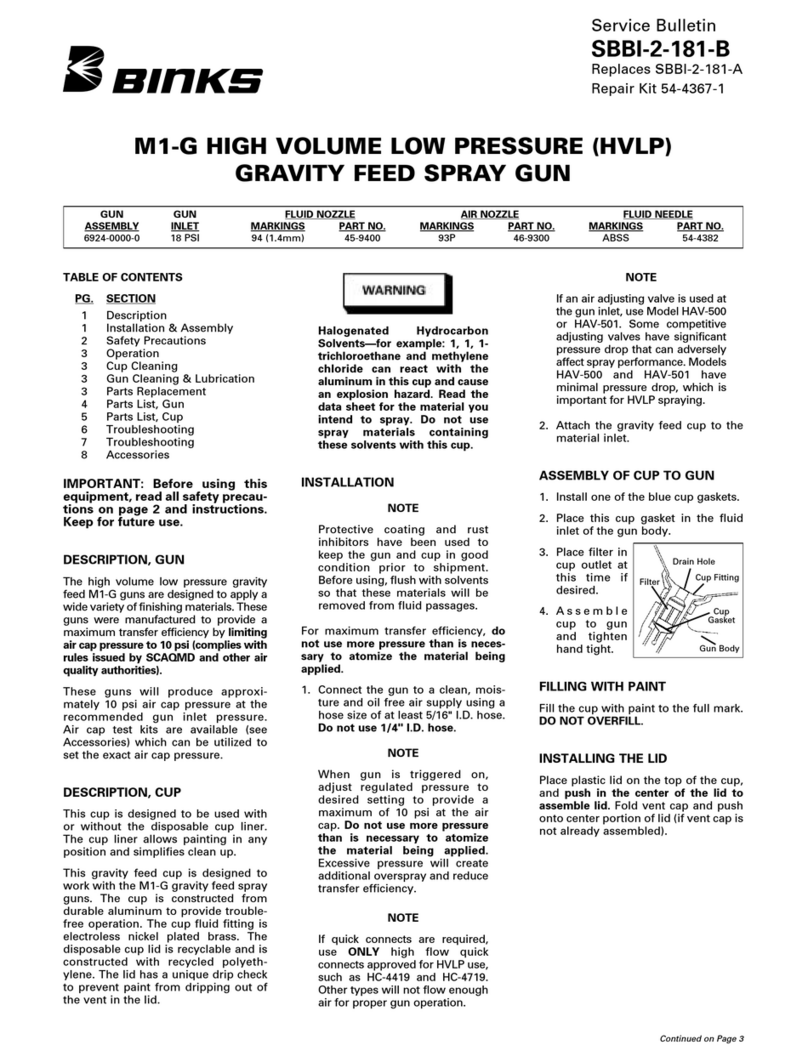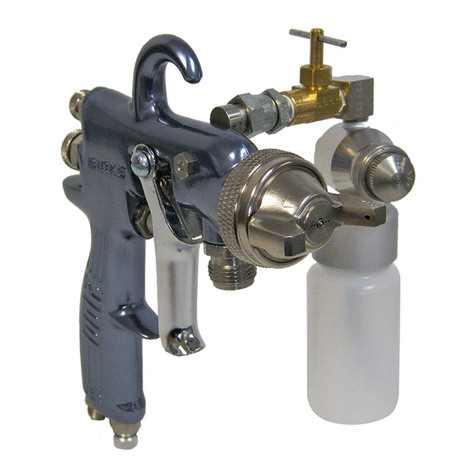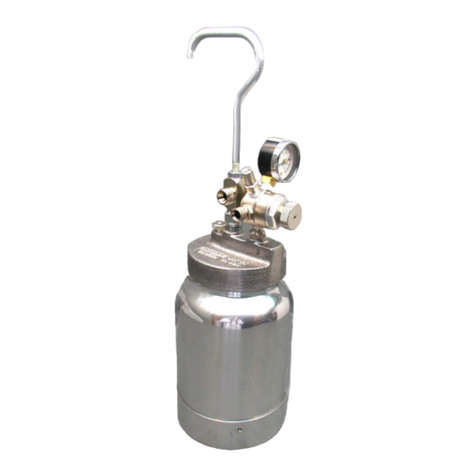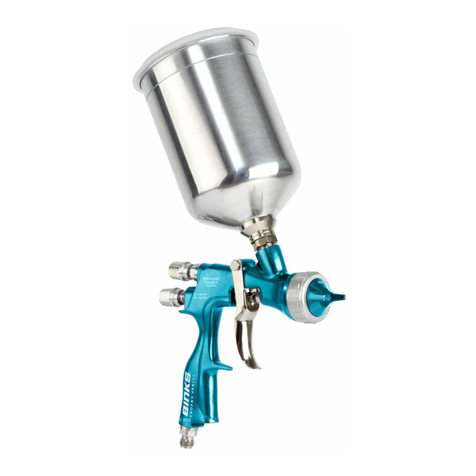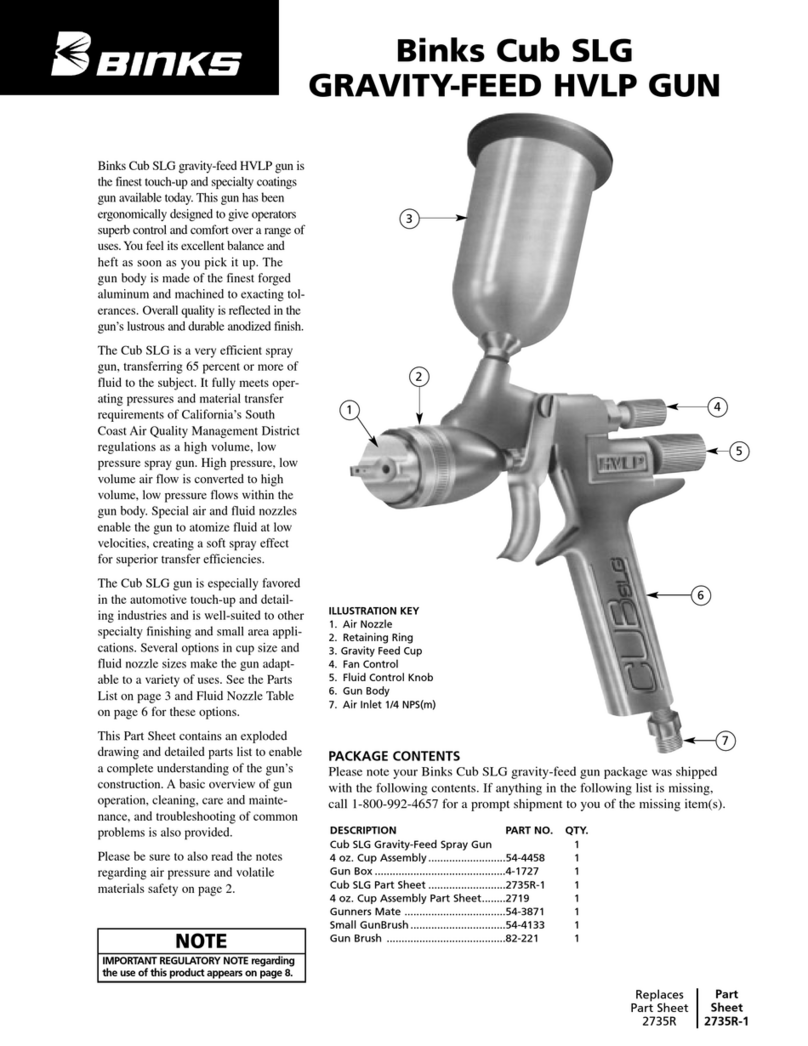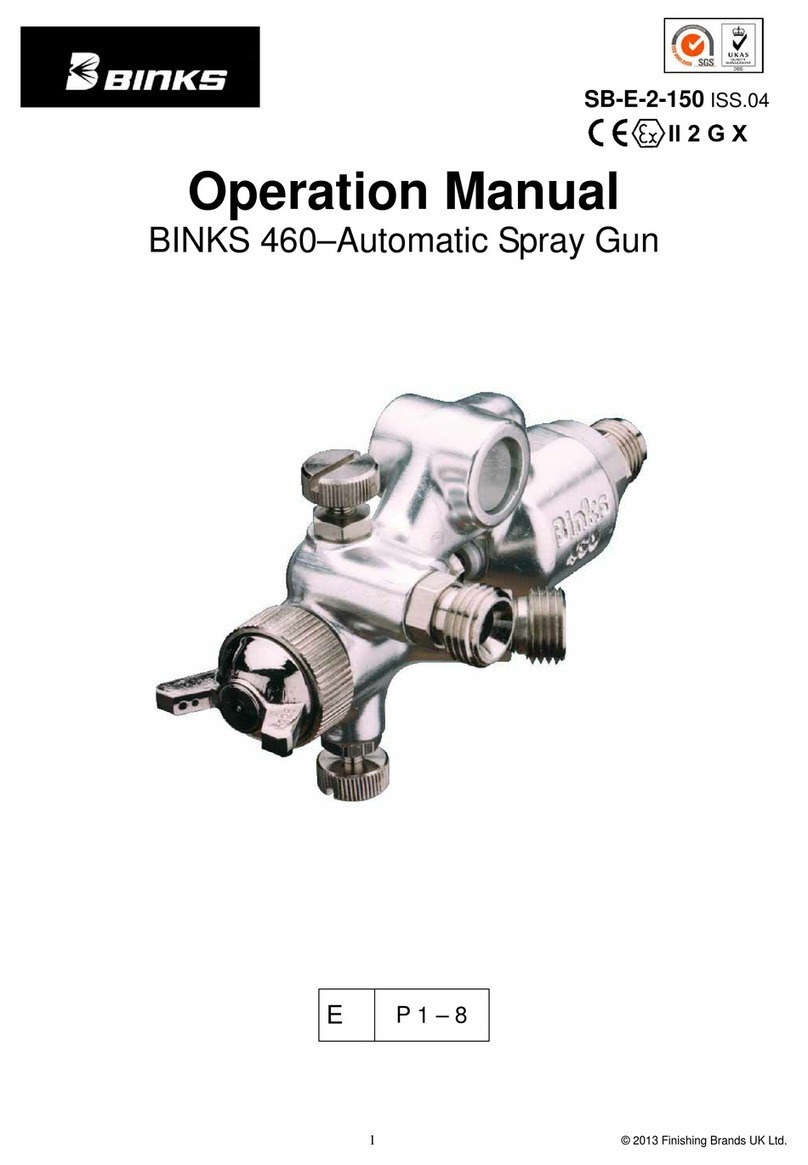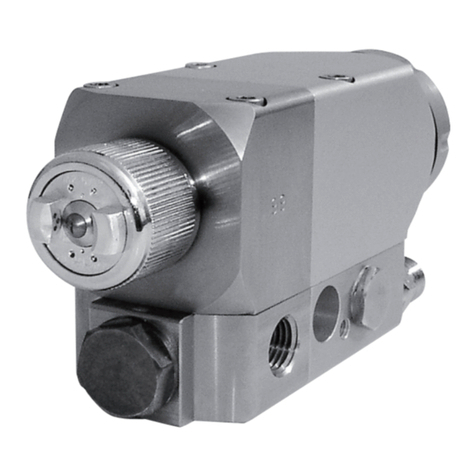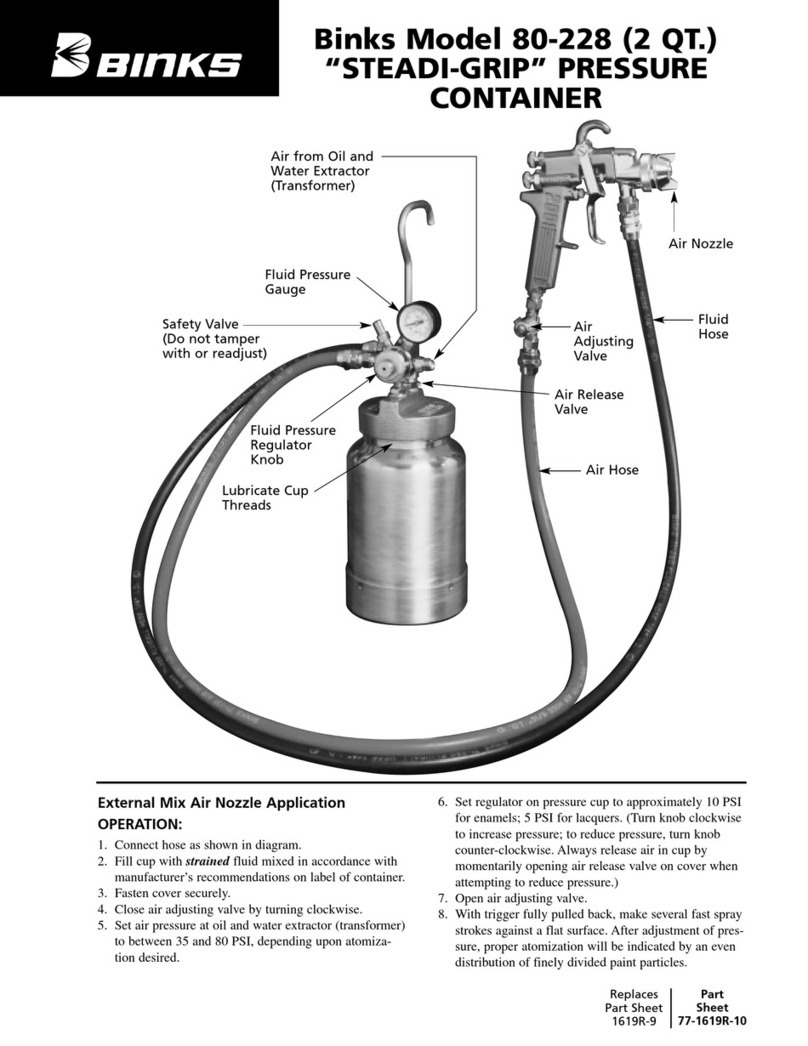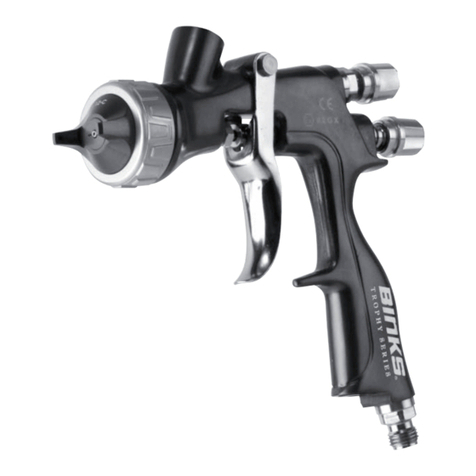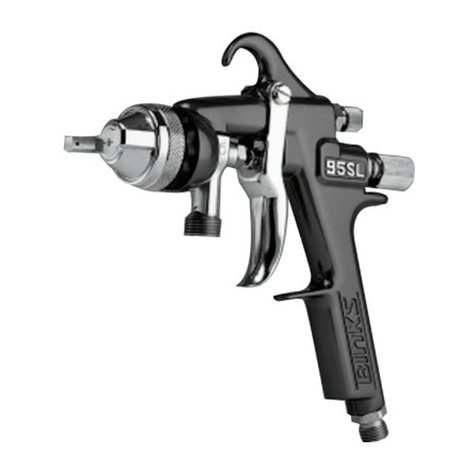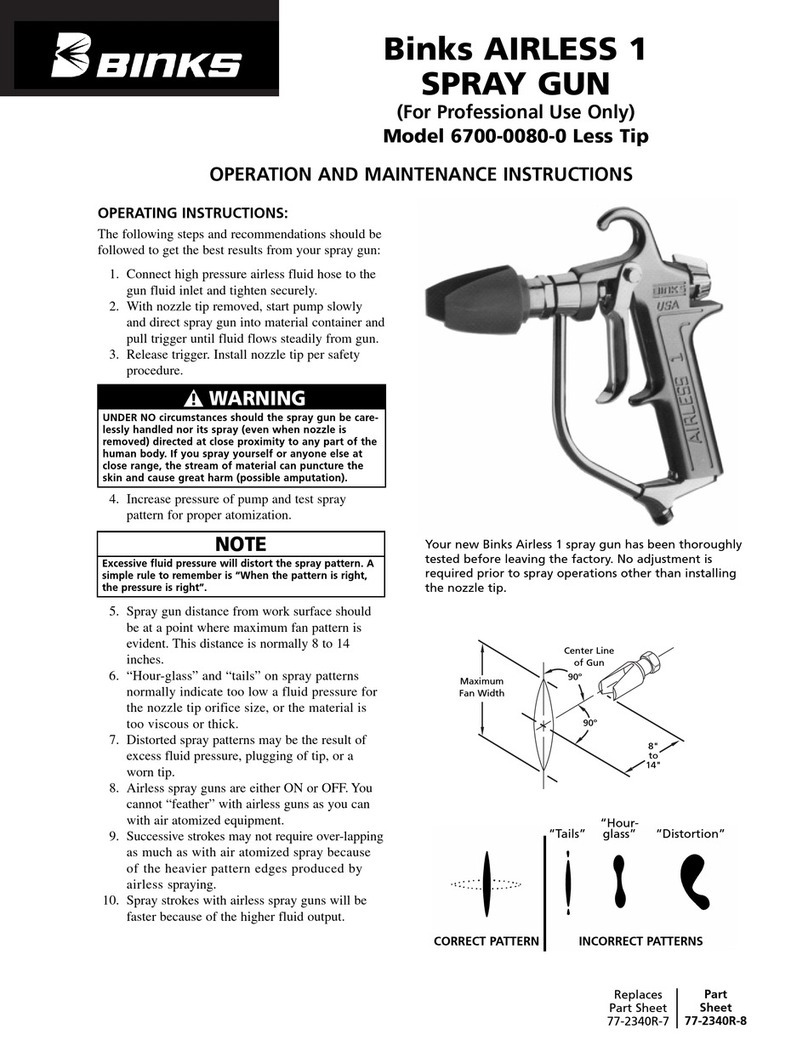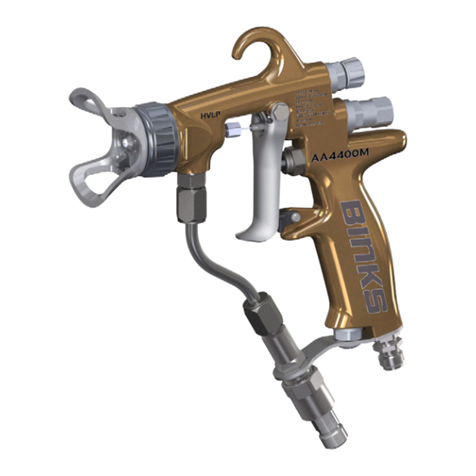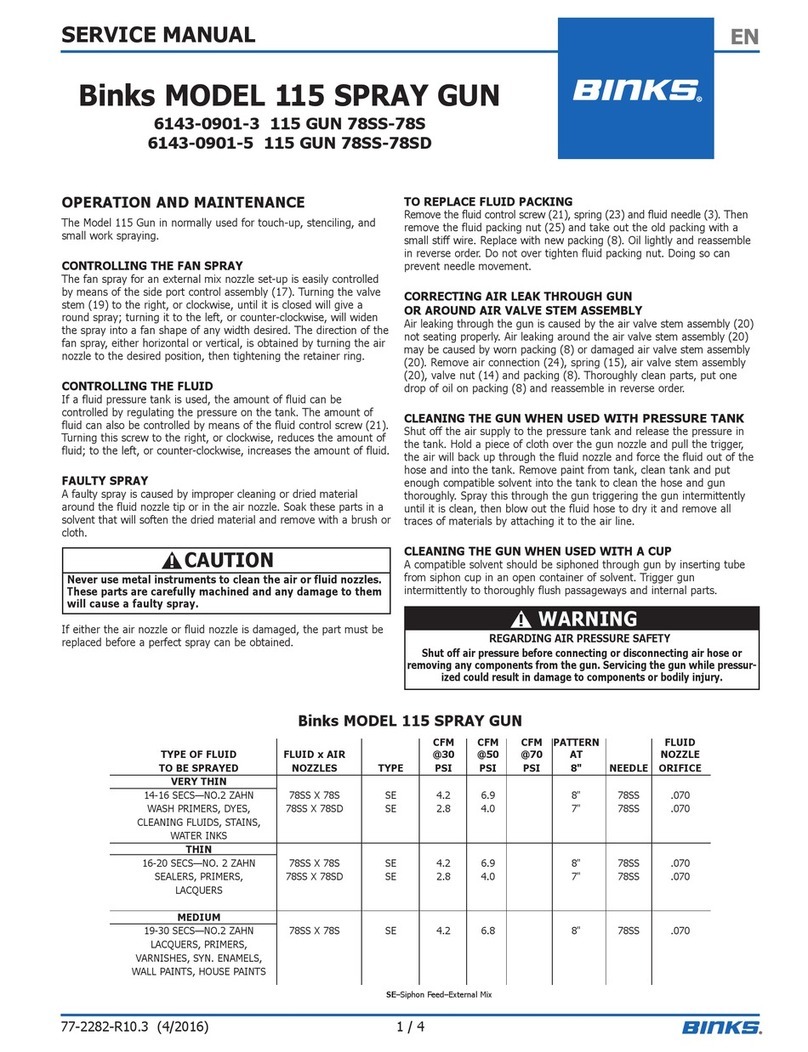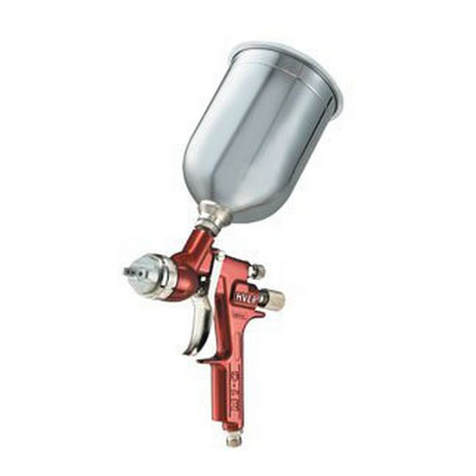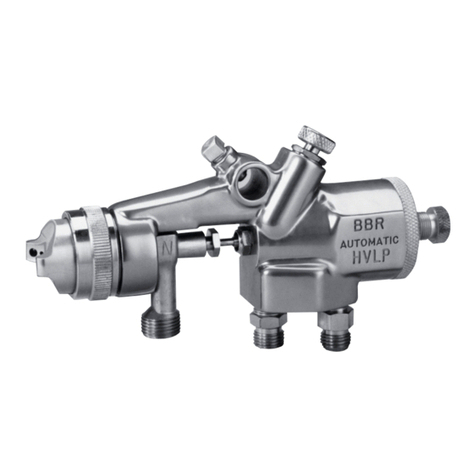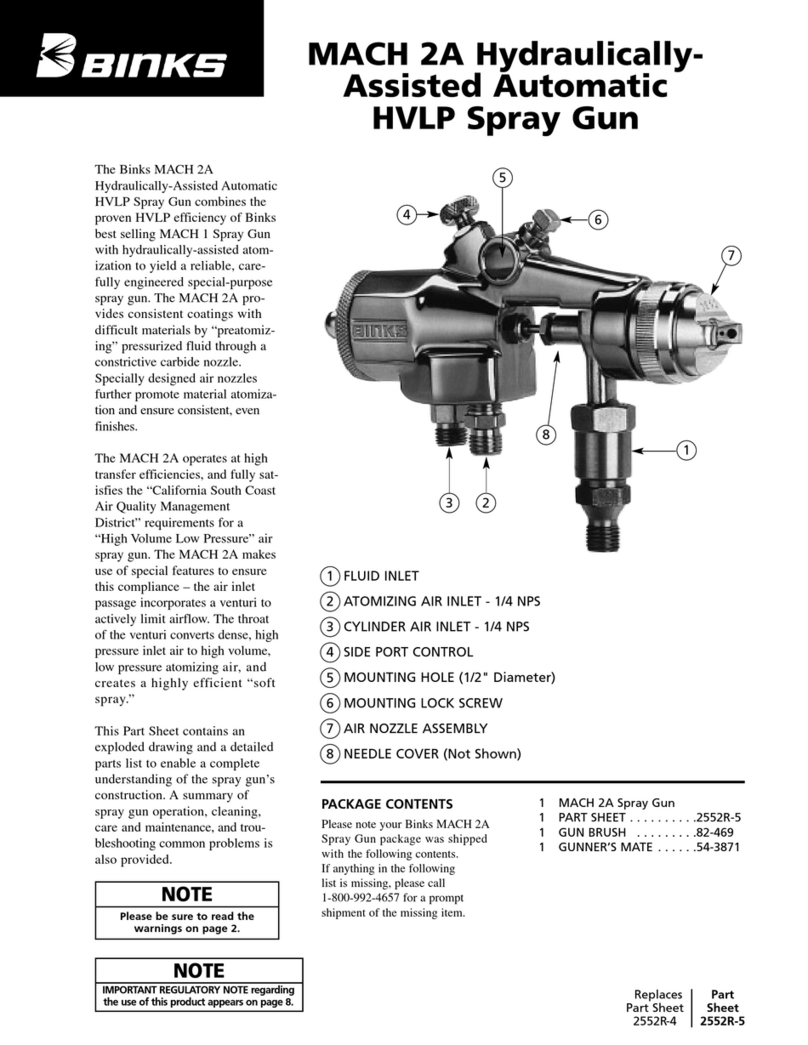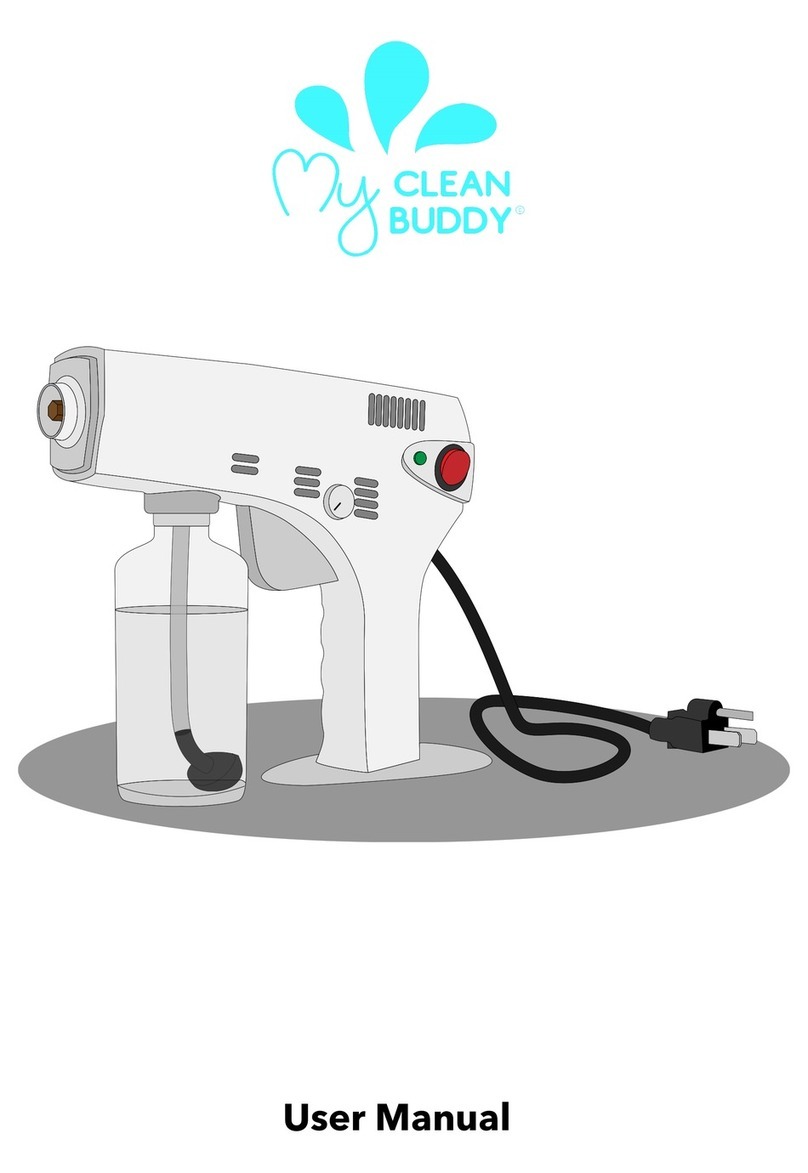3
5/16” 1/4”
Only 30 PSI at gun inlet
25 feet of 1/4” I.D. hose causes
a drop of 26 PSI between the
air supply and the gun.
(NOT RECOMMENDED)
50 PSI at gun inlet
25 feet of 5/16” I.D. hose
causes a drop of 12 PSI
between the air supply
and the gun. For this reason
Binks recommends the use
of 5/16” hose.
(RECOMMENDED)
With 60 psi applied at air supply
AIR PRESSURE
Atomizing pressure must be set prop-
erly to allow for the drop in air pres-
sure between the regulator and the
spray gun.
Separator filter is important.
Achieving a fine spray finish without the use of a good separator filter is virtually impossible.
A Binks regulator / separator filter serves a double purpose. It eliminates blistering and spot-
ting by keeping air free of oil and water, and it gives precise air pressure control at the gun.
Binks recommends using Model HFRL-508 Separator Filter / Regulator. See your local
distributor for other models.
Cross section view
showing comparison of inside
hose diameters (actual size).
60 lbs. regulated pressure
OPERATION AND MAINTENANCE FOR SV100 SPRAY GUN
Your new SV100 spray gun is excep-
tionally rugged in construction and is built
to stand up under hard, continuous use.
However, like any other fine precision
instrument, its most efficient operation
depends on a knowledge of its construction,
operation and maintenance. Properly
handled and cared for, it will produce
beautiful, uniform finishing results long
after other spray guns have worn out.
SET-UP FOR SPRAYING
Connecting Gun To Air Hose
Air should be supplied by a suitable
length of 5/16" diameter air hose fitted
with a 1/4" NPS(f) connection at gun
end. For hose lengths over 50', use 3/8"
diameter hose.
SPRAY GUN CLEANING
INSTRUCTIONS
In certain states it is now against the law
to spray solvents containing Volatile
Organic Compounds (VOC)’s into the
atmosphere when cleaning a spray gun.
In order to comply with these air quality
laws Binks recommends one of the fol-
lowing two methods to clean your spray
finishing equipment:
1. Spray solvent through the gun into a
closed system. An enclosed unit or
spray gun cleaning station condenses
solvent vapors back into liquid form
which prevents escape of VOC’s into
the atmosphere.
2. Place spray gun in a washer type
cleaner. This system must totally
enclose the spray gun, cups, nozzles
and other parts during washing, rins-
ing and draining cycles. This type of
unit must be able to flush solvent
through the gun without releasing
any VOC vapors into the atmosphere.
Additionally, open containers for storage
or disposal of solvent or solvent-con-
taining cloth or paper used for surface
preparation and clean-up may not be
used. All containers shall be nonab-
sorbent.
Pointers On Cleaning
When used with 1 quart cup, relieve
pressure in the cup. Then unscrew,
empty and carefully rinse cup out with
thinners. Place clean thinners in the cup
and spray this through the gun until it is
clean. Blow air through gun to dry it.
CAUTION
All parts on a spray gun should be
screwed in hand tight at first; this
will avoid the possibility of cross
threading the parts. If the parts
cannot be turned by hand easily,
make sure you have the correct
parts, unscrew, realign, and try
again. NEVER use undue force in
mating parts.
!
